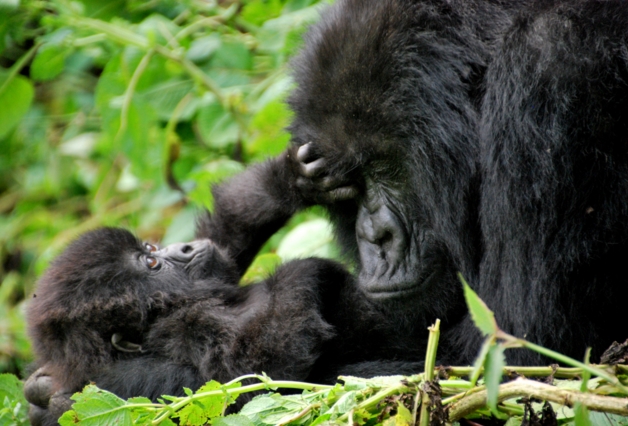
Advertisement
Cellphones are one of the most popular devices around today; almost everyone seems to have them. But these seemingly innocent electronics are hiding a dark secret: countless innocent gorillas have been slaughtered by militia groups and miners seeking an ore known as “coltan” that’s used to make cellphones.
Coltan is mined and exported to China because it contains tantalum, which is used to make capacitors in many modern devices besides cellphones, including game consoles. Most of the world’s coltan comes from the Republic of Congo. Deep in the forests, one can fine coltan aplenty.
Cellphones are a booming industry across the globe, and the growing demand only fuels the merciless mining industry.
In addition to coltan, the Republic of Congo is also home to the world’s largest primate, the Eastern lowland gorilla. Of the four gorilla subspecies, they are currently the most endangered. The mining has extended right across the gorilla’s primary habitat, and the area has been controlled by rebel militia for years.
Gorilla populations in grave danger
Wildlife observes say that they have witnessed entire families of gorillas be massacred in cold blood. These innocent creatures don’t stand a chance against militia men with machine guns. The animals’ habits are being destroyed for mining endeavors, and the gorillas are often killed and sold off into the illegal bush-meat trade.
The militia shoot down just about any large mammal indiscriminately; the meat from the animals is used to feed miners and troops. A recent study identified 69 different armed groups that were actively operating in the primates’ living area. [RELATED: Learn more about the latest research at Scientific.news]

Twenty years ago, before the Congo’s civil war, there were some 18,000 of these gorillas. Now, just a mere 3,400 are believed to remain. The population of Eastern lowland gorilla has declined by 80 percent in just one generation. Because of this dramatic decline, they have been placed on the critically endangered species Red list, marking them as just a single step away from going extinct.
The International Union for Conservation of Nature says that their population continues to decline by about 5 percent every year — a rate that is clearly unsustainable if we wish to save them.
The struggling rangers east of the Congo have been pleading for international assistance, to help save the gorillas from almost-certain extinction. The end for these magnificent animals continues to draw closer as the uncouth practices of the coltan mining industry remain unchecked.
John Kahekwa, who recently received the Prince William Award for Conservation in Africa, told the UK’s Mirror that he wishes more tourists would come; not only would their presence boost the economy, it would help to support their efforts at conserving the gorilla population.
“We very much want people to come back here, because the money from tourism will boost the local economy. That will enable us to build up the buffer zone so people don’t cut down more of the gorillas’ habitat for farming and mining,” Kahekwa explains.
Kahekwa says that he has organized a foundation to help encourage the local citizens to live in peace with the gorillas. He goes to different communities and tries to explain why it is important they do their best to protect the gorillas and how it benefits everyone. “But it is hard for people here to understand. They tell me that empty stomachs have no ears,” he says.
We need to take responsibility
As the gorilla population dwindles to nothing, you can be sure that there are plenty of people profiting off of their demise — whether or not it was intended is moot. Corporations who purchase tantalum or coltan from the Congo simply are not doing enough to ensure that the obtainment of their precious ore isn’t harming innocent animals.
However, the onus isn’t just on miners and manufacturers. There are some 15 million cell phone users in the US alone. And current estimates suggest that with new technology always on the horizon, the average life of a cellphone is a mere 14 months. This mentality of chasing after the newest thing is, at least in part, fueling the coltan trade frenzy and consequently, also driving gorillas into oblivion. Experts say that there may be as many as 500 million unused cellphones in the US, and that up to 100 million are added to that count every year. [RELATED: Keep up with the latest tech headlines at Glitch.news]
Karen Killmar, the associate curator of mammals at the San Diego Zoo, says that simply recycling old cellphones is one way to help make a dent in this disastrous industry and hopefully, save the gorillas.
Sources:
Submit a correction >>
This article may contain statements that reflect the opinion of the author
Advertisement
Advertisements















